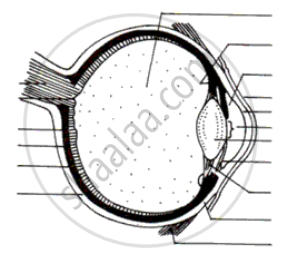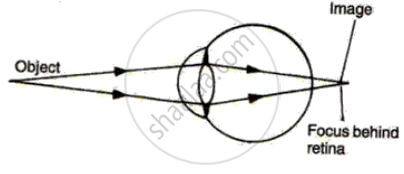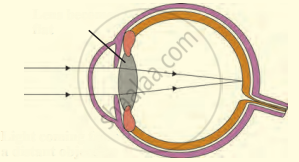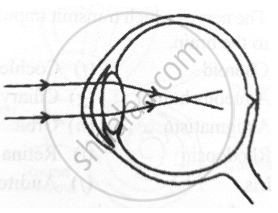Advertisements
Advertisements
प्रश्न
Write the name.
The fleshy screen behind cornea.
उत्तर
The fleshy screen behind cornea- Iris
APPEARS IN
संबंधित प्रश्न
Draw a labelled sketch of the human eye.
Draw a neat and labelled diagram of the structure of the human eye.
What do the ciliary muscles do when you are focusing on a nearby object?
Give the scientific names of the following parts of the eye:
carries signals from an eye to the brain.
Give the scientific names of the following parts of the eye:
changes shape to focus a picture on the retina.
Fill in the following blank with suitable word:
Most of the refraction of light rays entering the eye occurs at the outer surface of the.............
There are two types of light-sensitive cells in the human eye:
What is each type called?
How does the convex eye-lens differ from the ordinary convex lens made of glass?
The human eye possesses the power of accommodation. This is the power to:
(a) alter the diameter of the pupil as the intensity of light changes
(b) distinguish between lights of different colours
(c) focus on objects at different distances
(d) decide which of the two objects is closer.
The size of the pupil of the eye is adjusted by:
(a) cornea
(b) ciliary muscles
(c) optic nerve
(d) iris
What is presbyopia? Write two causes of this defect. Name the type of lens which can be used to correct presbyopia.
Name two animals having eyes:
at the front of the head.
Among animals, the predators (like lions) have their eyes facing forward at the front of their heads, whereas the animals of prey (like rabbit) usually have eyes at the sides of their head. Why is this so?
Given below is certain structure. Write against them its functional acivity.
retina and ……………………….
With reference to the functioning of the eye, answer the question that follow:
What is the shape of the lens during distant vision?
Give scientific reason:
One can sense colours only in bright light.
Label the following diagram :

Give the main function of the following:
Fovea centralis
Give the main function of the following:
Retina
Name the following:
The opening through which light enters the eyes.
The diagram alongside represents a certain defect of vision of the human eye.
(i) Name the defect.
(ii) Describe briefly the condition in the eye responsible for the defect.
(iii) Redraw the figure by adding a suitable lens correcting the defect. Label the parts through which light-rays pass.
(iv) What special advantage do human beings derive in having both eyes facing forward?

Name the following:
The most sensitive region of the retina.
Name the following:
The area where the image is formed but not seen by our eye is termed as.
State the Function:
Iris
Choose the Odd One Out:
Complete the following sentence with appropriate Word
The photoreceptor cells of the retina sensitive to colour are:
Write the name.
The part of human eye that transmits electrical signals to the brain.
Write an Explanation.
Farthest distance of distinct vision
The following figure show the change in the shape of the lens while seeing distant and nearby objects. Complete the figures by correctly labelling the diagram.

______ is tough and thick white sheath that protects the inner parts of the eye.
In a myopic eye, the image of the object is formed
At noon the sun appears white as
Given below is a diagram depicting a defect of the human eye. Answer the questions that follow:

- Give the scientific term for the defect.
- Mention one possible reason for the defect.
- What type of lens can be used to correct the defect?
Eyes of the nocturnal birds have large cornea and a large pupil. How does this structure help them?
The innermost layer of human eye is ______.
Match the following:
| Column - I | Column - II | ||
| 1 |
Retina |
a | Pathway of light |
| 2 | Pupil | b |
Far point comes closer |
| 3 | Ciliary muscles | c |
near point moves away |
| 4 | Myopia | d | Screen of the eye |
| 5 | Hypermetropia | f | Power of accommodation |
With reference to human eye, answer the following question.
What is blind spot?
Match the following:
| Column - I | Column - II |
| 1. Retina | a. Pathway of light |
| 2. Pupil | b. Far point comes closer |
| 3. Ciliary muscles | c. near point moves away |
| 4. Myopia | d. Screen of the eye |
| 5. Hypermetropia | f. Power of accommodation |
Name the following:
The circular opening enclosed by iris.
